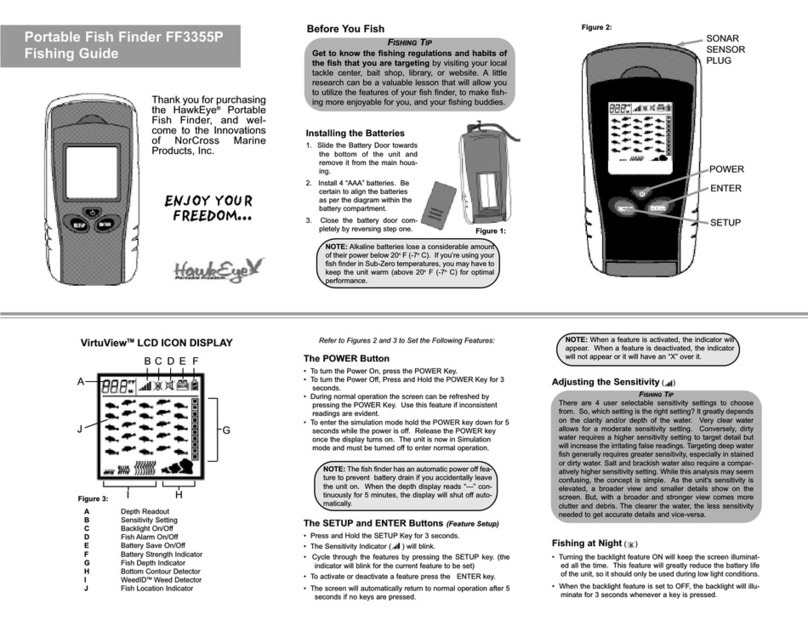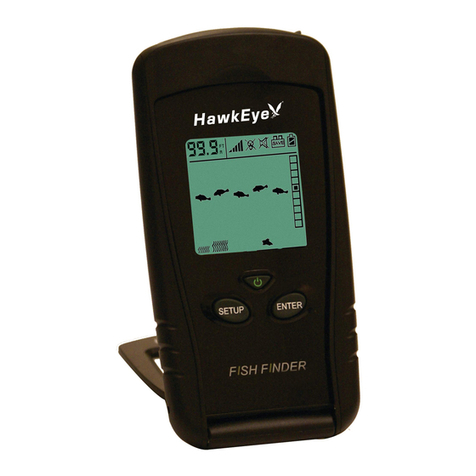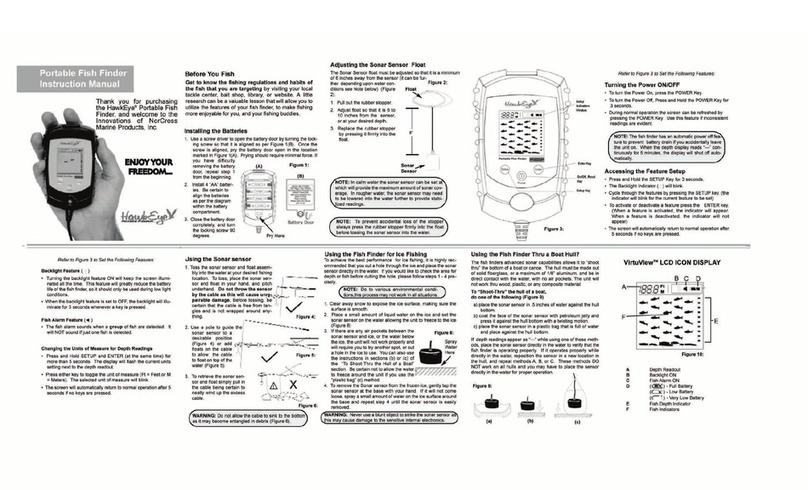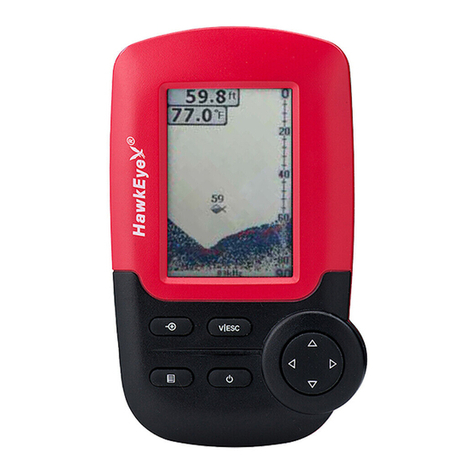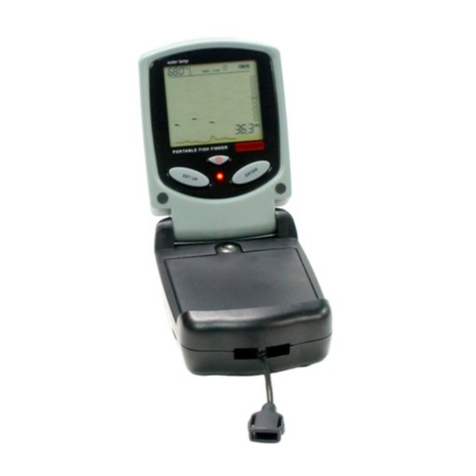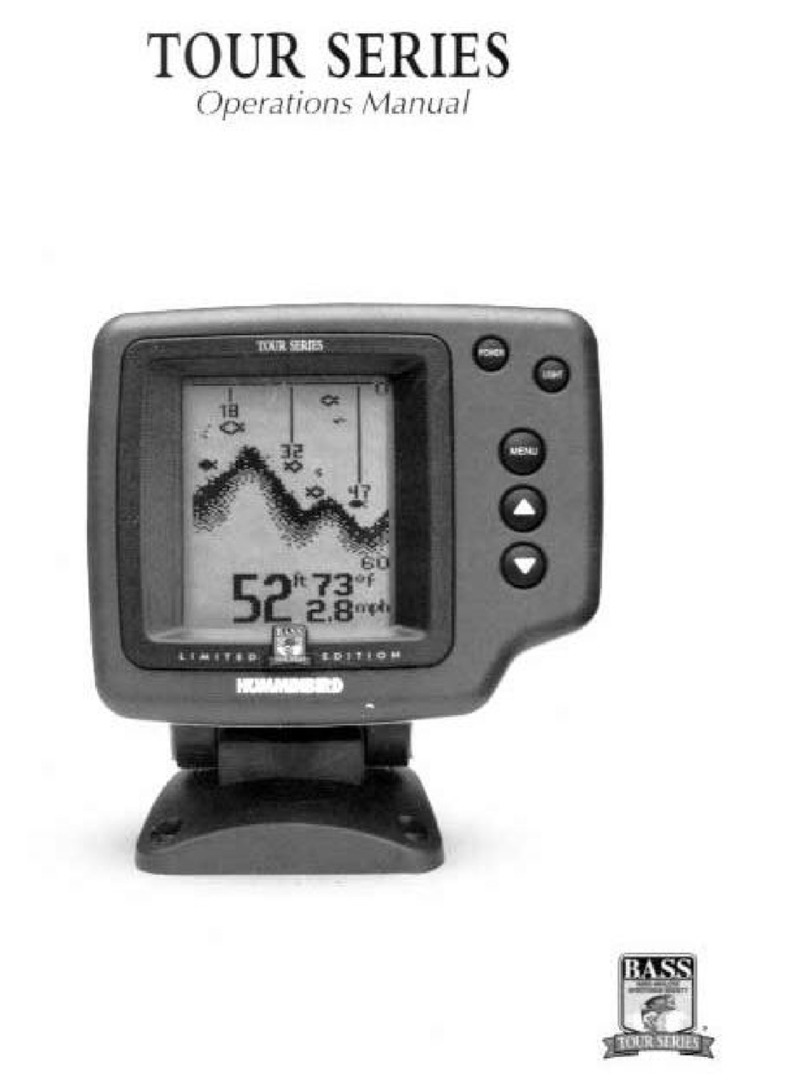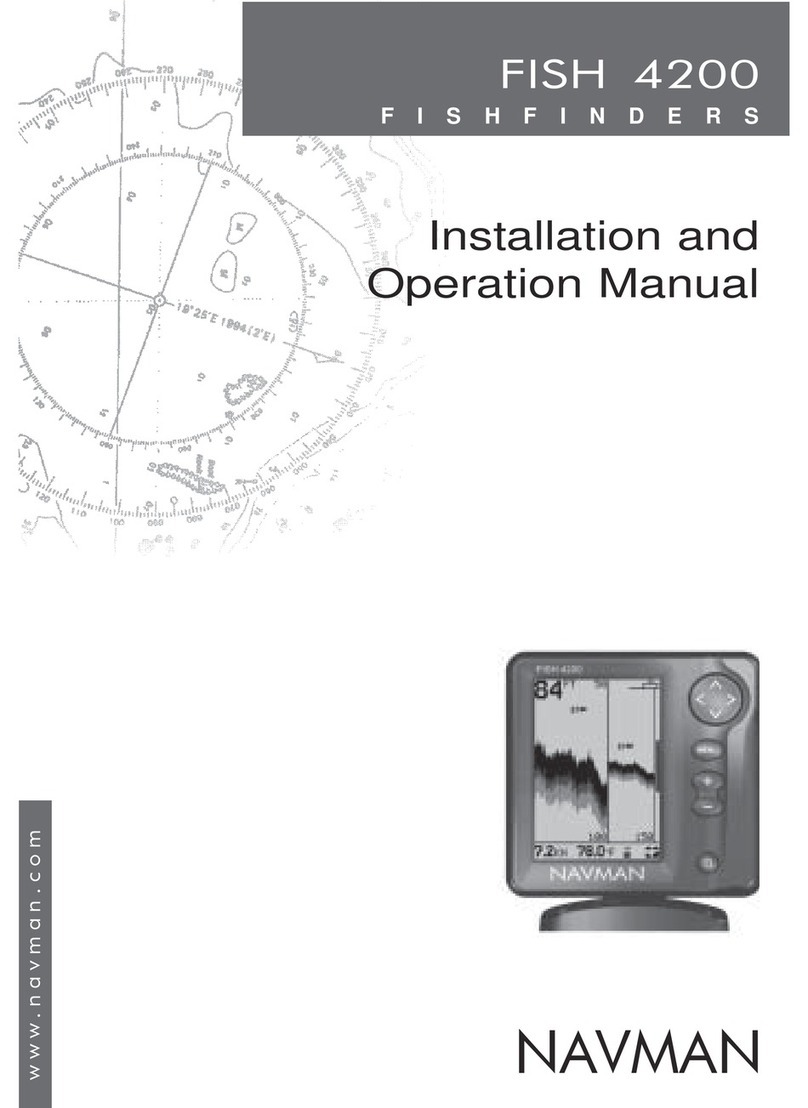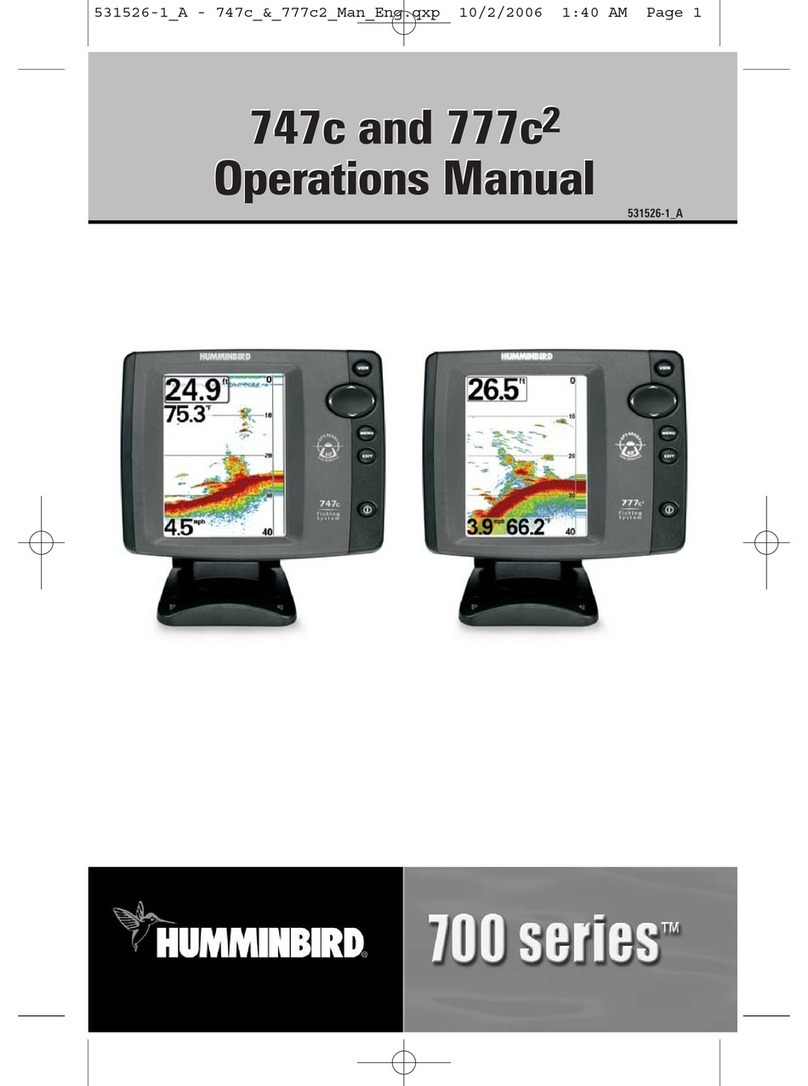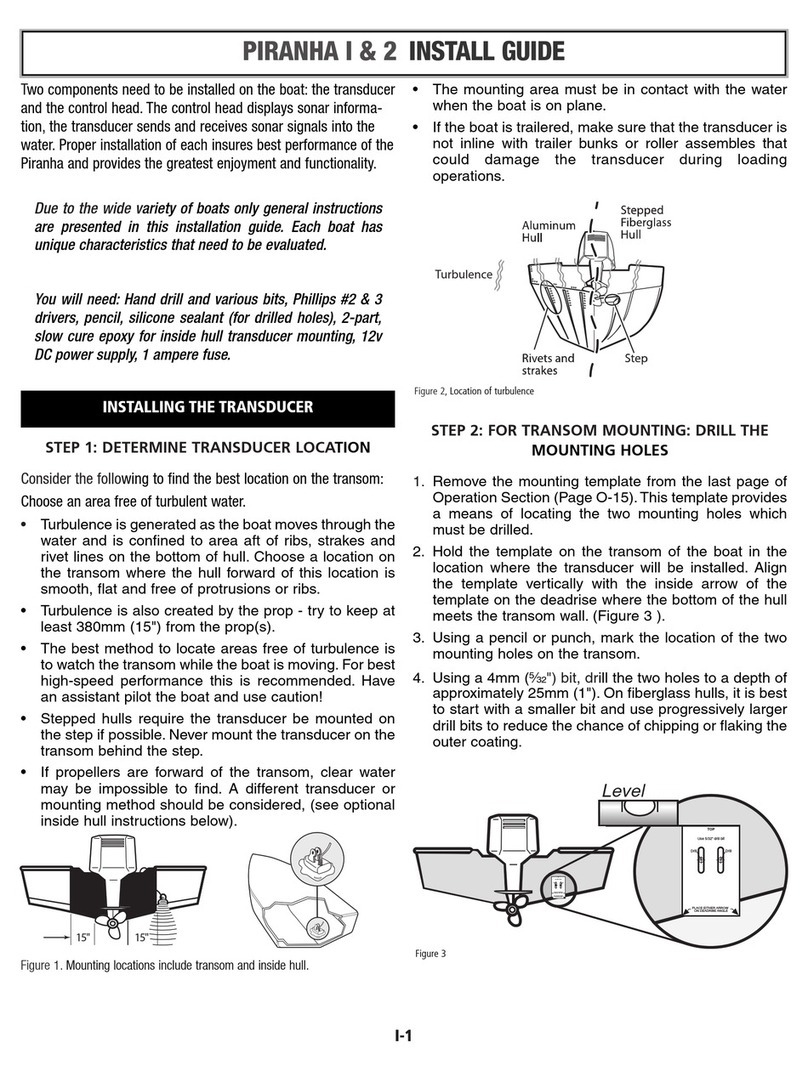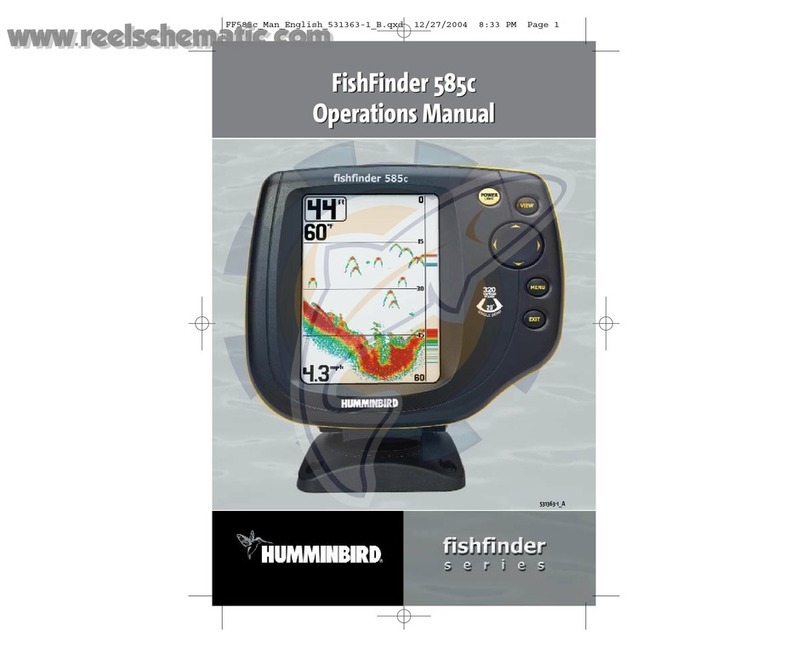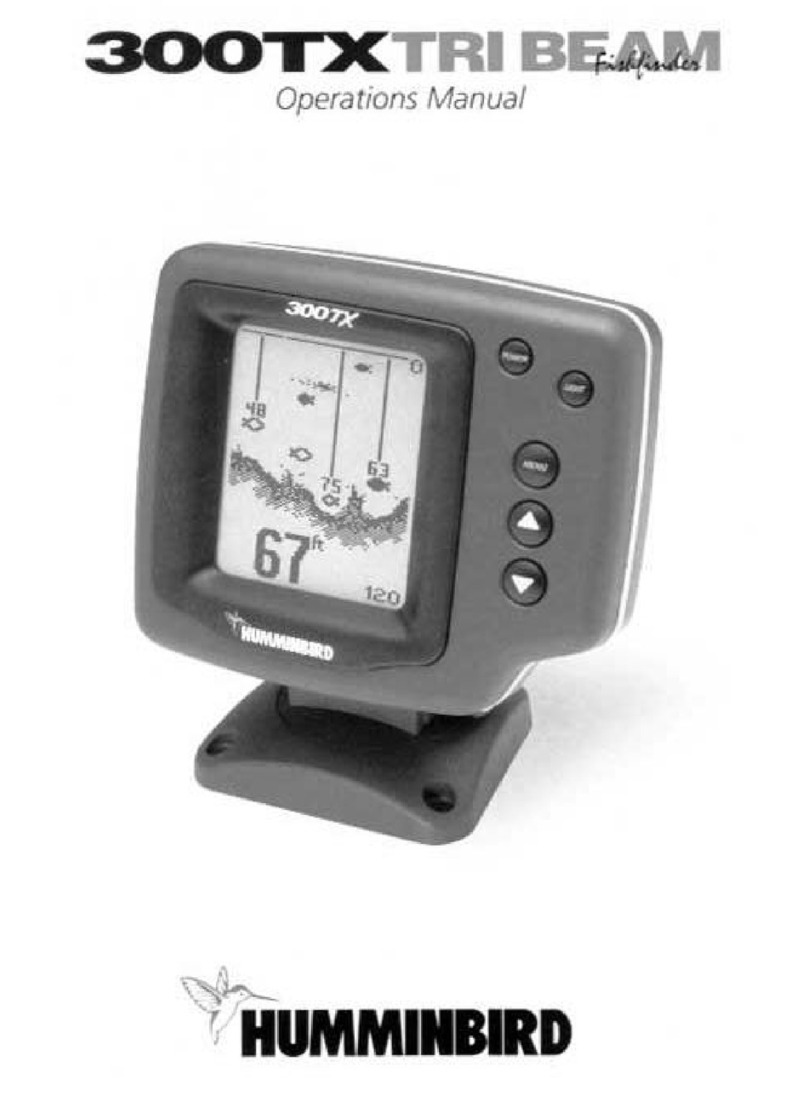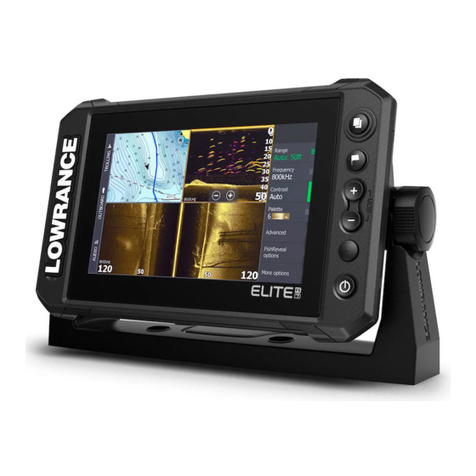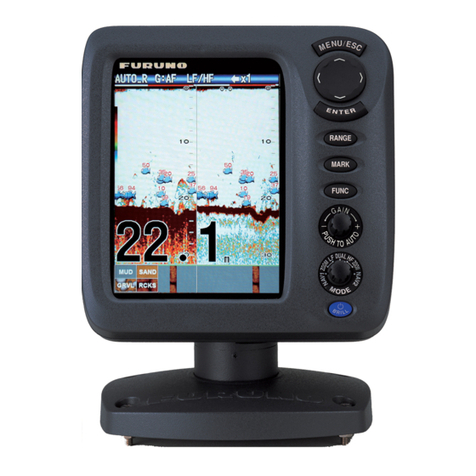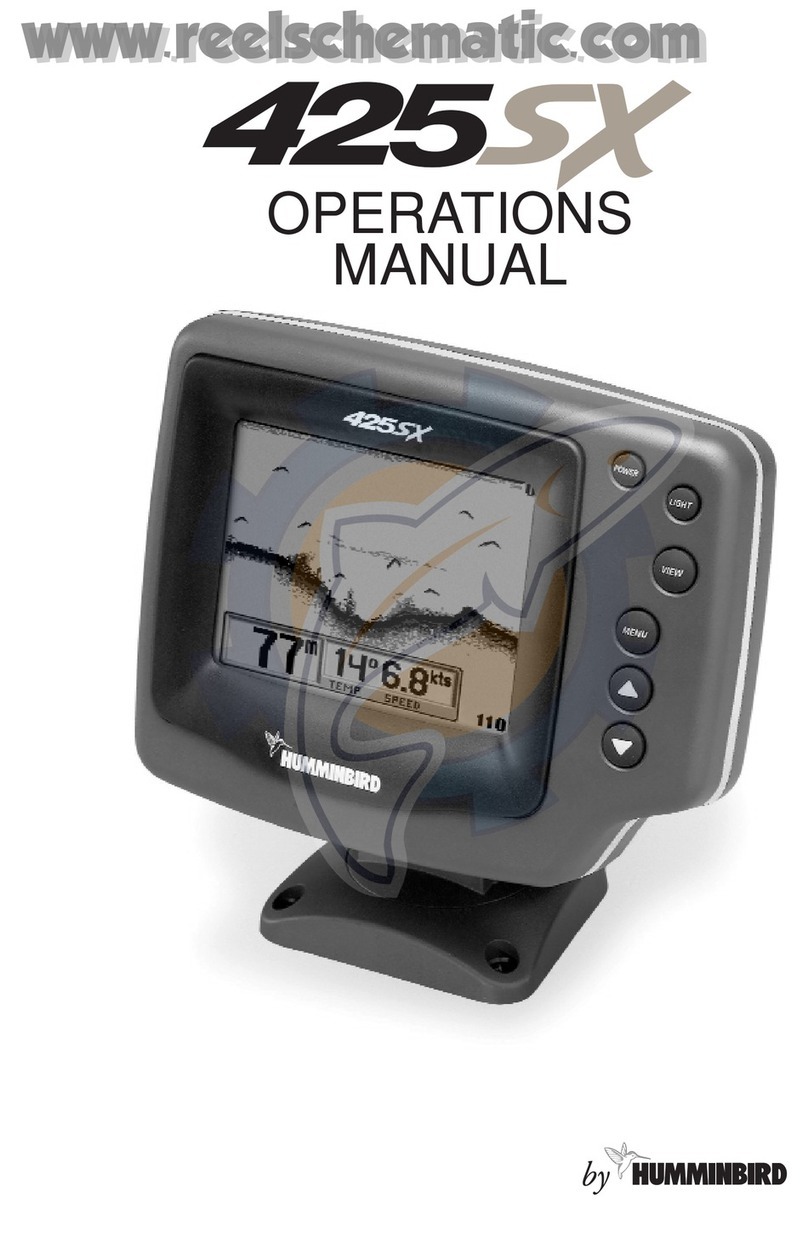
--6--
the fish finder to the fishing spot.
6.2 Precautions for the Use of Fish Finder
1. When the fish finder is working, do not touch the
bottom of the fish finder with your hands. Otherwise, the
test results of the product will be wrong, and even the
components inside will be damaged. If you want to get a
working fish finder out of the water, you can grab the fish
finder casing around the edges and remove it.
2. Our products can be used for a long time under
normal conditions. However, due to the ups and downs
in the water, the fish finder may be impacted, causing it
to hit the reef and other objects, resulting in damage to
the fish finder.
3. Due to the physical properties of ultrasound itself,
we recommend not using this product when the water
depth is below 0.8m (2.5FT).
6.3 Usage Mode:
6.3.1 Real-time scan mode
The fish finder can scan the water bottom of the
passing location in real time. Put the fish finder into the
water, slowly drag the fish finder to move on the water
surface, you will be able to see the accurate bottom
information (including bottom structure, depth, fish
position, etc.) from the display.
6.3.2 Fixed point scan mode
